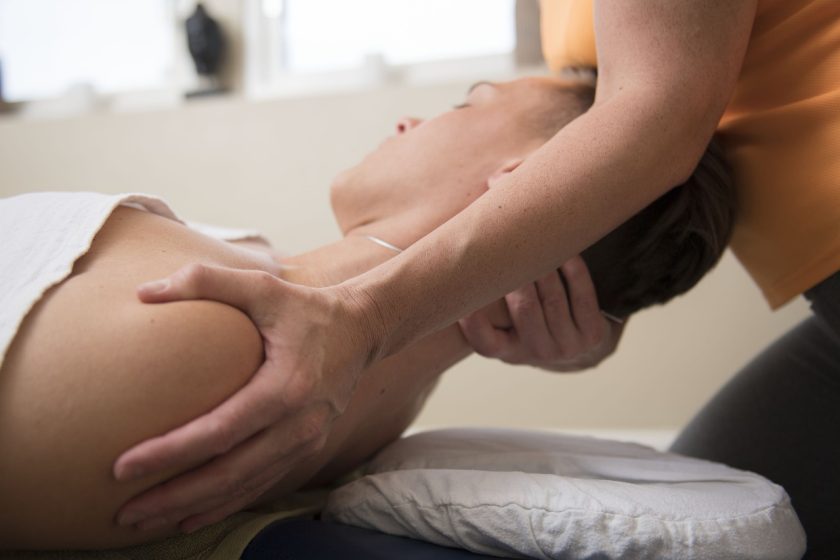Affiliate Disclosure: This post may contain affiliate links. This means we may earn a commission if you make a purchase through these links. This is at no extra cost to you. We only recommend products and services we truly believe in. Your support helps us keep the site running! Thank you.
I frequently get a painful neck after sleeping and have done for years. Long before I was diagnosed with hypermobility in my thirties, I would often wake up with extreme neck pain that would take days to get better.
I even remember attempting a driving lesson at 17 years of age with a painful neck that I couldn’t turn one way! Thankfully, my driving instructor helped me out that day!
Head and neck pain are common complaints in hypermobility. 66% of hypermobile people regularly have one of these two types of pain, according to a 2020 study.
So, let’s find out why hypermobile people are prone to a painful neck after sleeping and what can be done to prevent it.
What causes neck pain after sleeping?
Here are some common reasons for sleep-related neck pain in the general population:
Sleeping position:
- Sleeping on your stomach: This puts strain on your neck muscles and ligaments as your head is turned to the side.
- Sleeping with poor posture: Using too many pillows or sleeping at an awkward angle can misalign your neck and spine.
Muscle tension:
- Stress and anxiety: These can lead to muscle tension in the neck and shoulders, which can cause pain.
- Repetitive strain: If you hold your head in a certain position for a long time, such as when working at a computer, it can strain your neck muscles.
Hypermobility’s impact on neck pain when sleeping
As you can see everyone is at risk of hurting their neck when they sleep. But when you’re hypermobile, this risk increases.
Hypermobility can contribute to neck pain during sleep in several ways:
Joint instability: People with hypermobility have looser ligaments and joints, making them more prone to subluxations (partial dislocations) and micro-instabilities, even during sleep. These minor shifts in the neck vertebrae can irritate surrounding muscles and ligaments, leading to pain.
Muscle weakness: The increased joint laxity in hypermobility can lead to surrounding muscles compensating to provide stability. This overexertion can lead to muscle fatigue and tension, particularly during sleep when muscles are normally relaxed.
Poor sleep posture: Hypermobility can make it difficult to maintain proper spinal alignment while sleeping. This can lead to awkward positions that strain the neck muscles and ligaments, causing pain upon waking. Common culprits include:
- Hyperextended necks: Overarching the neck while sleeping puts extra pressure on the cervical spine and surrounding muscles.
- Side-lying with excessive arm abduction: Hypermobile individuals may inadvertently throw their arms out to the side during sleep, straining the shoulder muscles and impacting neck alignment.
- Pillow preferences: Some hypermobile sleepers find traditional pillows too high, forcing their necks into an unnatural position.
Sensory processing differences: Some people with hypermobility have differences in how they perceive and respond to sensory input. This might make them less aware of their body position during sleep, increasing the likelihood of adopting painful postures.
Tips for managing neck pain due to hypermobility
Navigating neck pain with hypermobility can be tricky, but there are plenty of strategies to find relief and enjoy restful sleep. Here are some tips that prioritize safety and well-being:
Strengthening your support team:
- Buddy up with a physiotherapist: A skilled physical therapist can design a personalized program to strengthen your stabilizing muscles and improve postural awareness. This duo effort empowers you to manage your body and prevent pain on your own terms.
- Befriend gentle stretches: Before bed, dedicate a few minutes to gentle stretches that target your neck and shoulder muscles. Think of it as a bedtime story for your muscles, helping them unwind and find their happy place for sleep.
Crafting a sleep haven:
- Pillow power: Ditch the sky-high pillows and opt for flatter options that keep your spine in alignment. Think of it as building a supportive bridge for your head and neck to rest comfortably.
Related Post: Discover which pillows are best for hypermobility
- Mattress matters: A firm mattress provides much-needed stability for your spine throughout the night. Imagine it as a sturdy ship keeping you from tossing and turning into awkward positions.
Related post: Find your ideal mattress for hypermobility
Mindful movements:
- Body awareness buddies: Practices like yoga or mindfulness can be your allies in understanding your body’s language. By paying attention to subtle sensations, you can gently adjust your sleep posture throughout the night, preventing pain before it starts.
- Heat and cold comfort: When pain flares up, consider heat or cold therapy. A warm compress can loosen tight muscles, while a cold pack can reduce inflammation. Think of them as your personal comfort squad, ready to bring relief when needed.
Bonus tips:
- Listen to your body: If a position feels uncomfortable, don’t hesitate to adjust! Your body is your best guide, so honor its signals for optimal sleep.
- Stay hydrated: Drinking plenty of water throughout the day keeps your muscles happy and flexible, reducing the risk of nighttime tension.
- Stress less, sleep more: Stress can exacerbate pain, so prioritize relaxation techniques like meditation or deep breathing before bed. Think of it as building a cozy mental blanket to lull you into a peaceful slumber.
Remember, consistency is key! By incorporating these tips into your daily routine, you can build a toolkit for managing neck pain and embrace restful sleep with confidence. And lastly, never hesitate to consult your doctor or a healthcare professional for personalized advice and support. They’re your ultimate allies on this journey!
I hope this information helps you find sweet relief and wake up feeling refreshed, ready to conquer the day with a pain-free smile!

